A poster inscribed with #blacklivesmatter—echoing a national movement to talk about race and justice—is ordered removed at Lewiston High School.
LEWISTON | A group of Lewiston High School students say school officials infringed on their right to free speech by ordering them to remove a poster they put up in school to protest grand jury decisions in two states not to indict police officers who killed unarmed black men.
The students said they had initially considered joining a nationwide protest during school last week by walking out of class. They had alerted school officials about the walkout so the administration wouldn’t be blindsided.
One of the leaders of the effort, Muna Mohamed, who is also senior class president and student representative to the Lewiston School Committee, said she was told that if the students walked out, they could face “unintended consequences,” including possible suspensions.
“We were told that other students might feel uncomfortable and it could lead to other demonstrations,” Mohamed said. Instead, she said, the students were encouraged to express their position in an educational way, such as creating a poster.
But after the poster went up in school, with the hashtag “#blacklivesmatter” on it, school officials told them to take it down.
“#blacklivesmatter” has been used by many on Twitter as part of the nationwide conversation over racial justice and the incidents in Ferguson, Missouri, and New York City, in which unarmed black men died at the hands of police officers. Grand juries in both cases declined to indict the officers, leading to protests—and in some cases, violence—over racial profiling and violence by police.
Chandler Clothier, a junior who designed the poster, said she was told Monday morning by Principal Linda MacKenzie to take the poster down. She said MacKenzie objected to the #blacklivesmatter hashtag and told her she would have to change it to “all lives matter” if she wanted the poster to stay.
The students said the poster they created was intended to stimulate discussion about race and justice.
“They keep saying they want students to raise their voices, but they want to define the students’ voices, and I feel that’s unfair,” Clothier said.
In addition to the headline, Clothier’s poster included displays with the last words of several black men killed by police, such as “I can’t breathe,” the final words said by Eric Garner in New York. A medical examiner ruled his death was caused by a chokehold used by a police officer.
High school officials said the students didn’t follow procedures requiring that posters be approved by school officials before they are put up.
The students admit they didn’t submit their poster for approval, but said that policy often isn’t followed.
However, in an email Tuesday, MacKenzie said she hadn’t seen the poster, telling the Portland Press Herald that “we have not seen nor approved any information and/or posters from students, due in part to the snow day today (Tuesday).”
MacKenzie did not respond to follow-up emails seeking to clarify the discrepancy between the students’ account and MacKenzie’s statement Tuesday that she hadn’t seen the poster. MacKenzie also did not respond to an emailed question asking if her objection was to the “black lives matter” message.
Superintendent Bill Webster said that failing to get prior approval by school officials is the issue, and that the matter was handled by officials at the high school.
“This isn’t the first poster that’s come down because it was put up before being vetted,” Webster said.
Students should be involved in national events, including the ongoing debate over race and police actions, he said.
“These events are unfortunate, but they are also tremendous activities for discussion and fostering student involvement in democracy,” he said.
Mohamed and her friends believe the poster could have sparked a conversation about race that should take place at the school. One of the other students involved with putting up the poster, senior Kalgaal Issa, said the Ferguson and New York City deaths haven’t come up when students discuss current events in class.
“There should be more awareness about it,” Issa said. “It’s like this really didn’t happen. That’s unbelievable.”
Webster said the high school doesn’t have racial problems, and that students of all backgrounds take part in school and after-school activities. Lewiston has attracted thousands of Somali immigrants fleeing strife in their homeland, which has boosted the presence of racial minorities in the schools.
Linda Scott, a member of the School Committee, said she couldn’t comment on the poster because she hadn’t heard about the matter until Tuesday. However, she did say it’s not unusual for high school students to protest and she generally doesn’t see anything wrong with that.
But another school board member, Jama Mohamed—no relation to Muna Mohamed—said he draws the line at using school property for protests.
Raymond Clothier, Chandler Clothier’s father, said he supports his daughter taking a stand and he backed the sentiment in her poster.
“I’m astounded that something as simple as ‘black lives matter’ is causing all this,” he said.
Read Edward D. Murphy’s article in The Portland Press Herald »


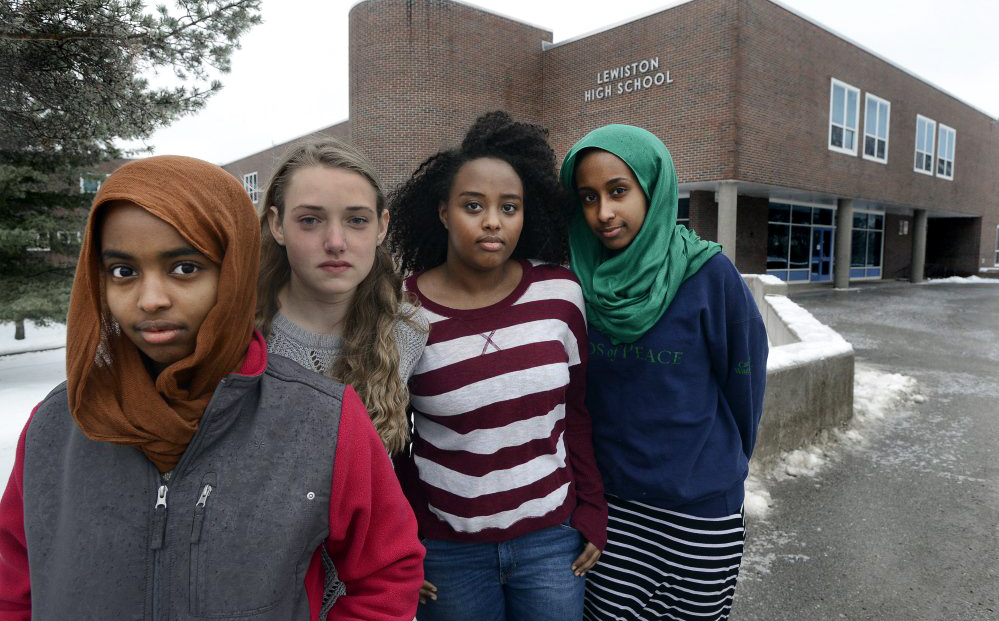
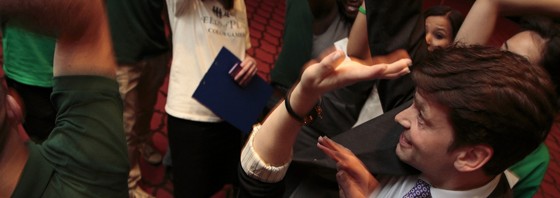
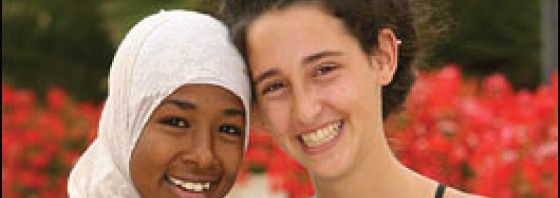
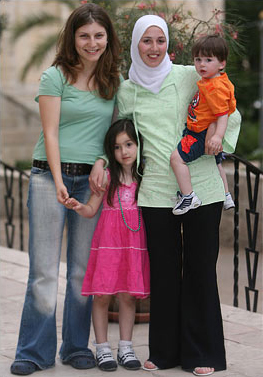 Israeli Noa Epstein, 24, met Palestinian Sara Jabari at a Seeds of Peace camp in 1997. They became pals and even made the dangerous trip to one another’s homes—risking jail in the occupied territories.
Israeli Noa Epstein, 24, met Palestinian Sara Jabari at a Seeds of Peace camp in 1997. They became pals and even made the dangerous trip to one another’s homes—risking jail in the occupied territories.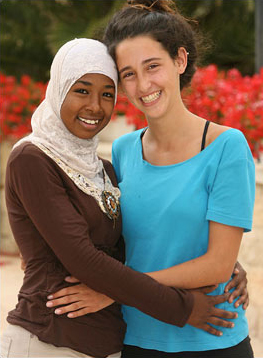 ISRAELI Hamutal Blanc, 16, from Haifa formed a firm friendship with Palestinian Amani Ermelia, 17, at a Seeds of Peace camp in June 2005. Amani lives in a refugee camp in Jericho.
ISRAELI Hamutal Blanc, 16, from Haifa formed a firm friendship with Palestinian Amani Ermelia, 17, at a Seeds of Peace camp in June 2005. Amani lives in a refugee camp in Jericho.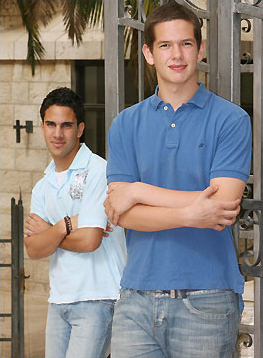 PALESTINIAN Mahmoud Massalha, 16, is from north Jerusalem. He made friends with Israeli Amos Atzmon, 16, of west Jerusalem, at a Seeds of Peace camp last year.
PALESTINIAN Mahmoud Massalha, 16, is from north Jerusalem. He made friends with Israeli Amos Atzmon, 16, of west Jerusalem, at a Seeds of Peace camp last year.